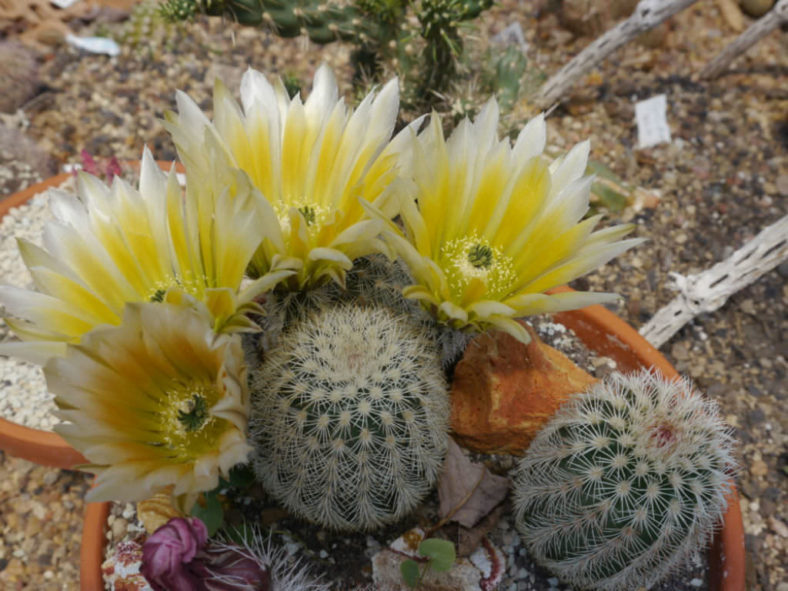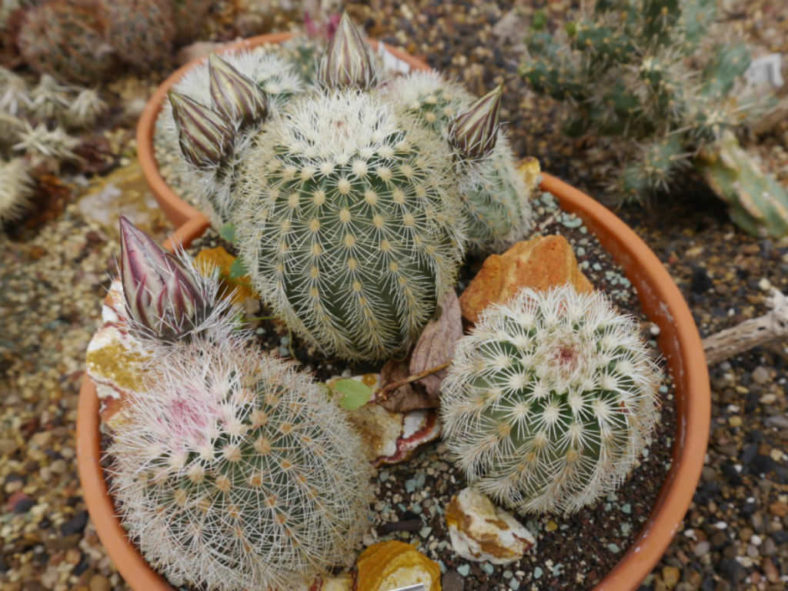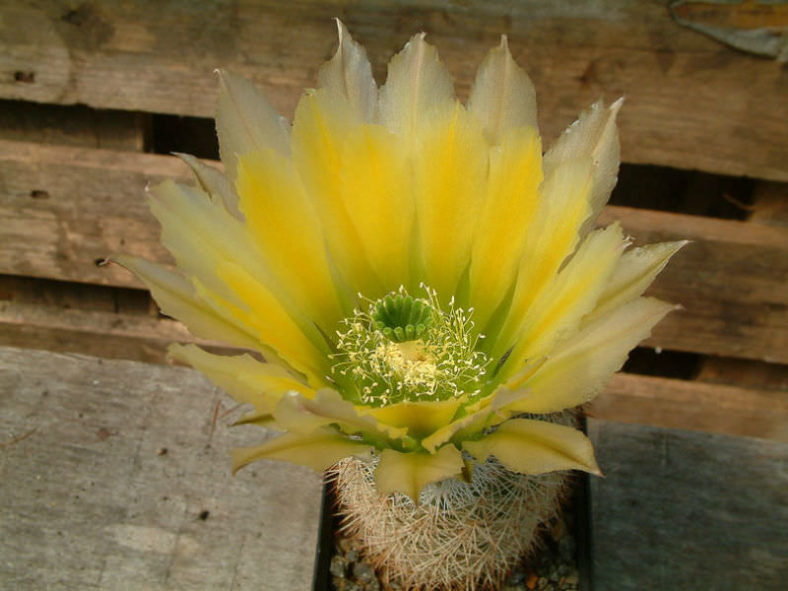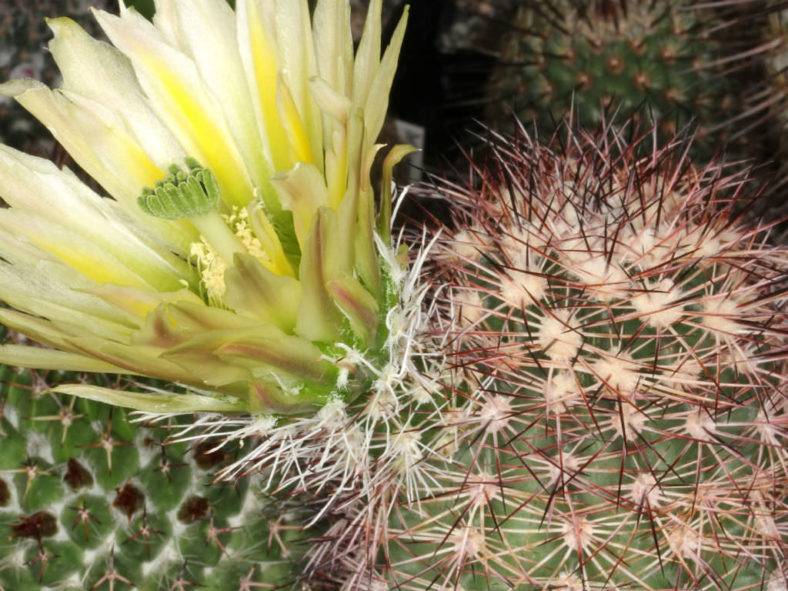Scientific Name
Echinocereus dasyacanthus Engelm.
Common Name(s)
Texas Rainbow, Texas Rainbow Cactus, Texas Rainbow Hedgehog, Spiny Hedgehog Cactus, Golden Rainbow Hedgehog, Yellow Pitaya, Yellow-Flowered Pitaya
Synonym(s)
Echinocereus dasyacanthus subsp. dasyacanthus, Echinocereus pectinatus var. dasyacanthus
Scientific Classification
Family: Cactaceae
Subfamily: Cactoideae
Tribe: Pachycereeae
Genus: Echinocereus
Etymology
The specific epithet "dasyacanthus" (pronounced "day-see-uh-KAN-thus") means "shaggy-spined" and refers to the dense, shaggy covering of spines of the stems of this species.
Origin
The native range of Echinocereus dasyacanthus extends from the United States (Arizona, New Mexico, Texas) to northern Mexico.
Description
Echinocereus dasyacanthus is a small cactus with erect, green stems with 15 to 18 ribs lined with clusters of spines that usually overlap, making the stem not visible. It can grow solitary or in loose clumps of up to 20 stems. The stems can reach a height of 10 inches (25 cm) and a diameter of 3 inches (7.5 cm), initially egg-shaped, becoming cylindrical with age. Each areole bears 3 to 10 central and 16 to 24 radial spines. They are appressed or spreading in all directions and can measure up to 60.6 inches (1.5 cm) in length. They are pink to pale yellow, white, or tan, and less often dark brown or purplish.
The flowers appear at the sides of the stem, above the areoles, close to the stem apex, in spring. They are usually bright yellow with a green throat, and can reach a length of up to 5 inches (12.5 cm) and nearly equal width. The fruits are dull purplish to maroon, globose to ellipsoid, and can grow up to 2.4 inches (6 cm) long and up to 1.8 inches (4.5 cm) wide. The edible pulp is white to purplish-pink and very juicy.

Hardiness
USDA hardiness zone 8b to 10b: from 15°F (-9.4°C) to 40°F (4.4°C).
How to Grow and Care
If you can grow other globular cacti successfully, you can most likely grow Echinocereus well. One of the key success factors is avoiding any hint of wet soil. Because their root systems are weak, they are particularly prone to root rot, which can eventually kill your plant. Otherwise, they thrive on a program of intense bright light, slight water, and a steady diet of light fertilizer. Echinocereus is vulnerable to mealybugs and aphids.
Echinocereus are slow-growing cacti that should only need repotting every other year or so. You can prolong repotting by removing plantlets and potting them up in pots. When repotting a cactus, carefully remove it from its pot and remove any clumped soil. These plants tend to have shallow root systems, so take care not to damage their roots.
See more at How to Grow and Care for Echinocereus.
Links
- Back to genus Echinocereus
- Succupedia: Browse succulents by Scientific Name, Common Name, Genus, Family, USDA Hardiness Zone, Origin, or cacti by Genus
Photo Gallery
Click on a photo to see a larger version.


